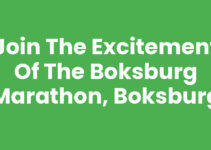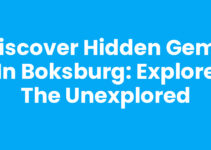Boksburg, a vibrant town located in the East Rand of Gauteng, South Africa, has witnessed significant transformations throughout its history. Over the years, this former gold mining town has evolved into a bustling urban center, reflecting the broader shifts in South Africa’s socio-economic landscape. In this blog post, we will delve into the various changes that have shaped Boksburg, exploring its historical background, urban development, and contemporary changes that define it today.
Read Also: Comprehensive First Aid Level 1 Training Boksburg Guide
How Has Boksburg Changed Over the Years: A Detailed Look
The changes in Boksburg can be categorized into several key areas: demographic shifts, economic development, urban infrastructure, and cultural evolution. Understanding these dimensions provides insight into the town’s journey and indicates its future trajectory.
Historical Background
Founded in 1887 as a gold mining settlement, Boksburg quickly became a hub for miners seeking fortune during the gold rush. The town was named after a Dutch settler, Jacobus Boks. Early settlement was characterized by rapid growth, driven largely by mining activities. By the late 19th century, Boksburg had developed into a well-established town.
Demographic Shifts
Throughout the 20th century, Boksburg experienced significant demographic changes. Initially populated by European settlers, the town’s demographics shifted dramatically during the Apartheid era due to the enforced racial segregation policies. As a result, many communities were relocated, and the population composition transformed.
Today, Boksburg is known for its cultural diversity. The implementation of democratic reforms in the 1990s has further enriched the community, welcoming people from various backgrounds, which led to an inclusive atmosphere that is a hallmark of modern Boksburg.
Economic Development
Boksburg’s economy evolved well beyond mining. Post-Apartheid, the town embraced industrialization, fostering the growth of various sectors such as manufacturing, retail, and services. The establishment of the Boksburg Business Park and the East Rand Mall has contributed to a burgeoning commercial landscape, attracting investments and encouraging entrepreneurship.
Additionally, the proximity to OR Tambo International Airport has provided logistical advantages, facilitating trade and commerce. Boksburg is now a central player in the East Rand’s economy, with vibrant shopping, entertainment, and business activities.
Urban Infrastructure
The infrastructure in Boksburg has seen remarkable improvements over the years. The development of road networks and public transport systems has made the area more accessible and navigable. Significant projects like the Boksburg City Improvement District (CID) have enhanced the aesthetic appeal of the town, promoting cleanliness and safety through community engagement.
Furthermore, the local government has invested in smart technologies to enhance urban living, including better traffic management systems and public services. Residential areas have also developed, offering modern amenities to accommodate the growing population.
Cultural Evolution
As Boksburg has diversified, so too has its cultural landscape. Festivals and community events celebrating various cultures have become commonplace, offering residents and visitors a glimpse into the richness of the town’s heritage. The East Rand Market is a prime example of such cultural gatherings, showcasing local arts, crafts, and gastronomy.
Historical sites, such as the Boksburg Lake and the old railway station, have also been preserved, providing a connection to the town’s rich past amidst ongoing modernization.
A Bright Future Ahead
The future of Boksburg is promising. As efforts continue to foster economic development and sociocultural integration, residents can look forward to a sustainable urban environment. Ongoing initiatives aim to create green spaces, promote eco-friendly practices, and enhance community living, making Boksburg not only a place to live but a community to cherish.
Related Guide: Discover Boksburg Cash & Carry: Your Ultimate Shopping Destination
Conclusion
In summarizing, Boksburg has changed dramatically over the years, evolving from a gold mining town to a dynamic urban center reflecting diversity and growth. Understanding these transformations helps appreciate the town’s rich history and its promising future.
Read Also: Join Our CrossFit Introduction Course Boksburg Today!
Frequently Asked Questions
What historical events shaped Boksburg?
The discovery of gold in 1887 and the subsequent gold rush significantly influenced Boksburg's early settlement and growth.
How has the demographic composition of Boksburg changed?
Boksburg's demographics shifted from predominantly European settlers during the gold rush to a more diverse community post-Apartheid.
What economic sectors are thriving in Boksburg today?
Manufacturing, retail, and services are currently thriving in Boksburg, supported by infrastructure developments and strategic investments.


